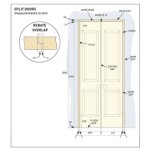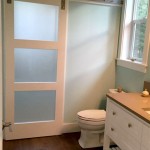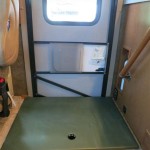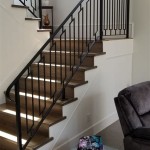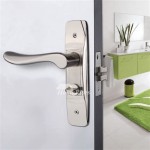Cost to Install Interior French Doors: A Comprehensive Guide
Interior French doors can dramatically enhance the aesthetic appeal and functionality of a home. They introduce natural light, create a sense of spaciousness, and offer a stylish separation between rooms. However, understanding the cost associated with installing these doors is crucial for budgeting and planning a successful home improvement project. The final price is affected by a combination of factors, ranging from the type of door and materials used to labor costs and the complexity of the installation.
This article provides a detailed breakdown of the various elements contributing to the overall cost of installing interior French doors. It explores material options, labor considerations, potential additional expenses, and offers guidance on how to obtain accurate estimates, offering a comprehensive understanding of the investment involved.
Factors Influencing the Cost of Interior French Doors
Numerous factors contribute to the final cost of installing interior French doors. These include the type of door, the materials it’s made from, the complexity of the installation, and the geographical location of the project. These variables can shift the final cost significantly. Understanding how these elements interact is essential for accurately estimating the expenses.
One primary cost driver is the material used in the construction of the doors. Wood, fiberglass, steel, and aluminum are the common options, each with its own price point. Solid wood doors offer a classic aesthetic and are generally the most expensive. Fiberglass offers durability and requires minimal maintenance, holding a mid-range price point. Steel and aluminum doors are cost-effective but often chosen for their security, rather than solely aesthetics. The choice of material directly influences the overall budget.
The door's style also affects the price. Pre-hung doors, which come already mounted in a frame, are typically easier and faster to install, potentially reducing labor costs. However, they might be more expensive upfront than slab doors, which require separate framing and hardware installation. Customized French doors, with unique designs, specific dimensions, or specialized features like integrated blinds, will naturally command a higher price than standard, off-the-shelf options.
The complexity of the installation process is another critical factor. If the existing opening needs to be widened or structurally altered, this will add to the labor costs. Simple replacements where the new door fits seamlessly into the existing frame are the most budget-friendly. Any modifications require a professional assessment to ensure structural integrity and to comply with local building codes.
Geographical location plays a significant role in determining both material and labor costs. Areas with a higher cost of living typically have higher labor rates, and depending on the local building material supply chains, some materials might be more accessible or more expensive than others. Obtaining quotes from multiple local contractors is essential to get an accurate understanding of the prevailing rates in a specific area.
Breaking Down Material Costs
The material of the interior French doors has a direct impact on both the initial purchase price and the long-term maintenance costs. Different materials offer varying levels of durability, insulation, and aesthetic appeal, which will contribute to fluctuations in the price.
Solid wood doors, such as those made from oak, maple, or mahogany, are prized for their beauty and craftsmanship. They offer excellent insulation and can be stained or painted to match any décor. However, solid wood is prone to warping and cracking if not properly sealed and maintained, requiring regular upkeep. Solid wood doors can range from several hundred dollars to several thousand dollars, depending on the type of wood and the complexity of the design.
Fiberglass doors are a popular choice for their durability and low maintenance requirements. They are resistant to warping, cracking, and rotting, making them suitable for high-humidity environments. Fiberglass doors can be manufactured to mimic the look of real wood, offering a similar aesthetic appeal at a lower cost. Expect to pay between $500 and $1500 for a fiberglass interior French door, depending on the size, style, and features.
Steel doors are typically used for exterior applications, but they can also be used for interior doors in situations where security or soundproofing are important. Steel doors are strong and durable but may not offer the same aesthetic appeal as wood or fiberglass. Steel doors need to be primed and painted to prevent rusting, and they can be prone to dents and scratches. Steel interior French doors are typically among the least expensive options, ranging from $300 to $1000.
Aluminum doors are lightweight and resistant to corrosion, making them suitable for modern or contemporary designs. Aluminum doors can be powder-coated in a variety of colors and finishes. Aluminum is a good choice where moisture is a concern but not often the first consideration for interior applications unless it is part of a specific design aesthetic. Aluminum interior French doors can range from $400 to $1200, depending on the design and finish.
Beyond the door material itself, hardware costs also need to be considered. Hinges, handles, latches, and door knobs can significantly add to the overall expense. High-quality hardware not only enhances the appearance of the doors, but also ensures smooth operation and longevity. Hardware costs can range from $50 to several hundred dollars, depending on the quality and style.
Understanding Labor Costs and Installation Considerations
Labor costs represent a significant portion of the overall expense of installing interior French doors. These costs vary depending on the complexity of the installation, the contractor's hourly rate, and the geographic location of the project. Understanding what factors influence labor costs can help homeowners negotiate better rates and avoid unexpected expenses.
Simple door replacements, where the new door fits seamlessly into the existing frame, are typically the least expensive to install. In this scenario, the contractor simply needs to remove the old door, adjust the frame if necessary, and install the new door and hardware. This type of installation can usually be completed in a few hours, resulting in lower labor costs. Homeowners can expect to pay between $150 and $500 for a simple door replacement, depending on the contractor's hourly rate and the complexity of the hardware installation.
More complex installations, such as those that require widening the existing opening or installing a new frame, will incur higher labor costs. These installations often require structural modifications, which can be time-consuming and require specialized skills. Contractors may need to reinforce the surrounding walls, reroute electrical wiring, or adjust plumbing lines, which can significantly increase the project's duration and expense. Labor costs for complex installations can range from $500 to $2000 or more, depending on the extent of the modifications required.
The contractor's hourly rate is another important factor to consider. Experienced and licensed contractors typically charge higher rates than inexperienced or unlicensed contractors. However, hiring a qualified contractor is essential to ensure that the installation is done correctly and safely. A poorly installed door can lead to problems such as air leaks, drafts, and difficulty opening and closing, which can result in costly repairs down the line. Hourly rates for experienced contractors can range from $50 to $150 per hour, depending on the location and the demand for their services.
Before hiring a contractor, it's important to obtain multiple quotes and to verify their credentials and insurance coverage. Ask for references from previous clients and review their online reviews to assess their reputation and quality of work. A reputable contractor will provide a detailed estimate that includes the cost of materials, labor, and any potential additional expenses. They should also be willing to answer any questions and address any concerns you may have about the installation process.
Permits may be required for door installations, especially if structural modifications are involved. Failing to obtain the necessary permits can result in fines and delays, so it's important to check with the local building department before starting the project. The cost of permits varies depending on the location and the scope of the work but typically ranges from $50 to $200.
Finally, consider the potential for hidden costs. Unexpected issues, such as damaged framing or hidden plumbing, can arise during the installation process, requiring additional repairs and expenses. It's wise to budget for a contingency fund to cover these unexpected costs. A contingency fund of 10% to 15% of the total project cost is generally recommended.
In conclusion, accurately estimating the cost of installing interior French doors involves carefully considering all the relevant factors, including the type of door, the materials used, the complexity of the installation, and the labor costs. By understanding these variables and obtaining multiple quotes from qualified contractors, homeowners can make informed decisions and budget effectively for their home improvement project.

Builders Choice 60 In X 80 15 Lite Clear Wood Pine Prehung Interior French Door Hdcp151550 The Home Depot

Cost To Install Doors The Home Depot

2024 Cost To Install French Doors Angi

How Much Does It Cost To Install A French Door

2024 Cost To Install French Doors Angi

Average Cost Of Installing French Doors Real Estate Expert Tre Pryor

French Doors Guide Interior Exterior Modernize

Average Cost Of Installing French Doors Real Estate Expert Tre Pryor

French Doors Guide Interior Exterior Modernize

2024 Cost To Install French Doors Door Opening Size Thirstymag Com
Related Posts



